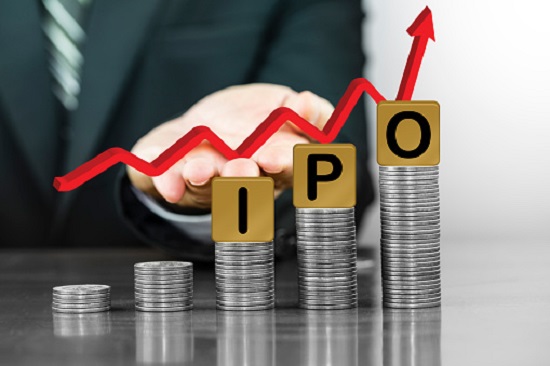AI-Powered Trading App Benefitting DFIN as IPOs Surge to Record Numbers
By John P. Desmond, AI Trends Editor The number of initial public offerings (IPOs) is setting records month to month and is not seen slowing down anytime soon. Companies raised $167.2 billion through 454 offerings on US exchanges through Dec. 24 in 2020, compared with the previous full-year record of $107.9 billion at the height […]


By John P. Desmond, AI Trends Editor
The number of initial public offerings (IPOs) is setting records month to month and is not seen slowing down anytime soon.
Companies raised $167.2 billion through 454 offerings on US exchanges through Dec. 24 in 2020, compared with the previous full-year record of $107.9 billion at the height of the dot-com boom in 1999, according to Dealogic as quoted in a recent account in The Wall Street Journal.
Of the total, $67.3 billion was raised in the fourth quarter, an amount six times the total for the first three months of the year.
Through mid-March of 2021, another record has been set with $162.4 billion raised by 600 issuers, the most ever at this point in the year, according to a recent account in Bloomberg. Accounting for about half of those proceeds—some $77 billion—are “blank check” listings, also called special purpose acquisition companies (SPACs). In the first three months of 2020, the SPACs raised $37 billion.
SPACs raise capital in an IPO and use the cash to merge with a private company which it plans to take public, usually within two years.
South Korean e-commerce giant Coupang Inc., raised $4.6 billion this week in the biggest US listing since Uber Technologies Inc. in 2019. Dating app Bumble Inc. also surged in its debut last month after raising a greater-than-expected $2.15 billion.
Factors driving this growth are monetary and fiscal stimulus measures, low interest rates and global stock markets are record levels, and optimism that vaccines will get the coronavirus pandemic under control. Issuers are rushing to sell while demand from investors is hot and valuations are high.
Some are concerned the bloom might be off the rose. An index that tracks SPAC listings has dropped 17% from its high in February, Bloomberg reported. US regulators have cautioned retail investors against celebrity-endorsed cash shells. Celebrity accounts include sports figures Shaquille O’Neal and Alex Rodriguez, and former US House Speaker Paul Ryan.
“With changes at the SEC, SPACs in the US may come under greater regulatory scrutiny,” stated Jason Manketo, global co-head of the equities practice at law firm Linklaters LLP.
Others still see more upside, including bankers optimistic that the SPAC craze will be exported overseas; only a handful of blank-check firms have listed in Europe and Asia so far. Interested companies include Nasdaq Nordic, the London Stock Exchange Group and Singapore Exchange Ltd.
Donnelley Financial Solutions Well-Positioned with AI for “SPAC and spin”
One company finding itself in a good position to exploit these trends is Donnelley Financial Solutions (DFIN), offering software and services related to risk and compliance. The company in 2018 entered an agreement to acquire eBrevia, a provider of AI-based data extract and contract analytics software. Work ensued to integrate eBrevia into the product line to assist in executing acquisitions via SPACs and the spinning out of companies as a result.

“DFIN not only provides the necessary technology to private companies on the path to IPO, but also the expertise and services needed for their continued success,” stated Mike Whitmire, CEO and founder, FloQast, supplier of workflow automation software. DFIN this week announced a partnership with FloQast, to use its software with DFIN’s ActiveDisclosure product to streamline the financial close and reporting processes, especially for companies planning to go public.
The AI content helps to make the work go faster and increases accuracy. The process is referred to as “SPAC and spin” or as “De-SPAC” by Craig Clay, president of global capital markets for DFIN. After the SPAC is created, “That’s when the real work begins,” to find and target the asset to acquire, he said in an interview with AI Trends.
The process is for the SPAC to be created, have an IPO, then pursue an acquisition opportunity. A negotiation is pursued for a merger or purchase. The SPAC arranges for other financing if needed. Once an agreement is reached on an acquisition and the financing is in place, a public announcement is made. Following that, the SPAC undertakes a shareholder vote or tender offer process, offering investors options. If all the requirements are met, the combination is consummated, in what is called the ‘De-SPAC translation,’ resulting in a publicly traded company.

“The DFIN platform with eBrevia AI plays a key role in all of the above—the actual collaboration, filings and transactions of the De-SPAC,” Clay said. “The real use case for AI is in the pursuit, diligence and execution of the De-SPAC—where the SPAC acquires a company. That’s where DFIN and its eBrevia AI capabilities are sought by SPAC’s,” Clay said.
In February, DFIN handled 133 IPOs that raised over $40 billion, according to a release on its website. Clients included Bumble.
Asked about competitors to DFIN, Clay said separate companies compete in related document creation, data hosting and with AI to assist with SEC filings and regulations, “But no one has it under one roof, much less all connected.”
Read the source accounts in The Wall Street Journal, Bloomberg and the DFIN website.




































